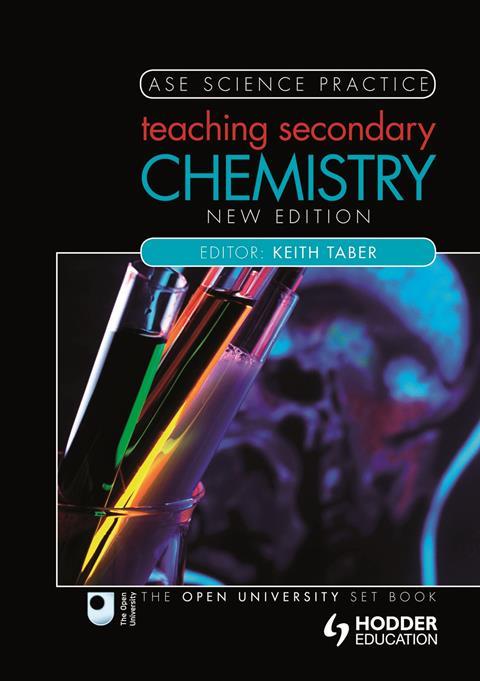Teaching sequences, activities and potential misconceptions
2nd edition
Keith Taber (ed)
London, UK: Hodder Education
2012 | 400pp | £19.99 (PB)
ISBN 978-144-412-432-3
It was in a meeting at the RSC last summer that I announced I had been seriously considering a drastic rethink of the way I approached the teaching of bonding. Despite being prepared for my students' misconceptions and trying to address them with the excellent resources prepared by Keith Taber, I felt I was swimming against the tide from the moment ionic bonding was introduced.
Coincidentally, the new edition of Keith Taber's ASE science practice: teaching secondary chemistry had just been published and I was asked to take a look. The book is aimed as a general handbook to support the teaching of the subject. The list of authors reads like a who's who of chemistry education.
Each chapter suggests students' previous knowledge, potential misconceptions, a teaching sequence and plenty of high-quality activities to chart your way through the main concepts in Key Stages 3 and 4. The new edition includes updates to reflect changes in the secondary curriculum, updated IT resource links and new ideas from recent curriculum development projects such as the Gatsby SEP publications.
While I'm not currently teaching chemical bonding, I am wading through a particle quagmire with my year nines. In their first lesson they revealed that they had picked up virtually every misconception you could expect to encounter. I spent an afternoon poring over Philip Johnson's chapter on introducing particle theory. In my 8th year of teaching, I didn't expect to pick up very many new ideas, but I was pleasantly surprised. I was thoroughly absorbed and genuinely amazed at some of the tips and tricks I found out. I made at least a page of notes full of things I wanted to change about my practice. One of the simplest tips was using ellipsoids rather than spheres in particle diagrams to avoid liquid diagrams that need an unrealistic amount of free space to represent the disorder in the arrangement.
So did this book provide me with an alternative method for approaching bonding? I can say that on reading the chapter that Taber wrote, the answer was a resounding 'yes!' Much of the information contained within this book may be available freely through other resources (such as the RSC's Chemical misconceptions: prevention, diagnosis and cure1) but bringing them together here in such a concise and accessible form makes this book absolutely indispensable to all teachers of chemistry, no matter how experienced. If I had to recommend one single book to any chemistry teacher, this would be it.
Purchase Teaching secondary chemistry from Amazon.co.uk
References
- K Taber, Chemical misconceptions: prevention, diagnosis and cure, 2 volumes. Cambridge, UK: RSC Publishing, 2002










No comments yet